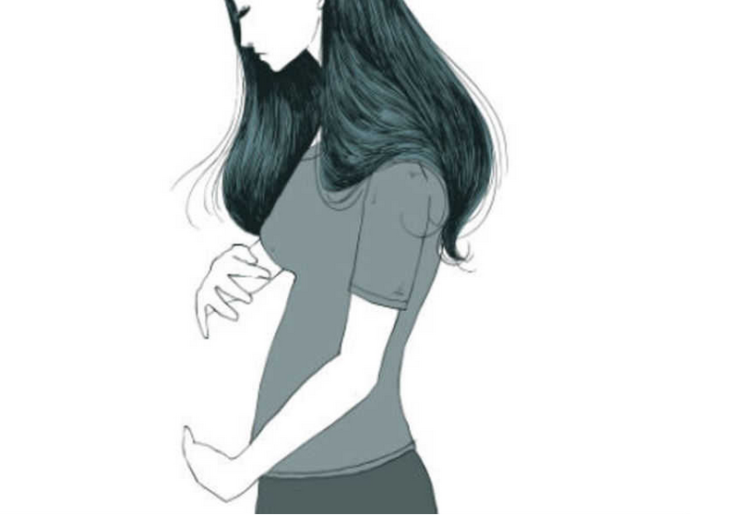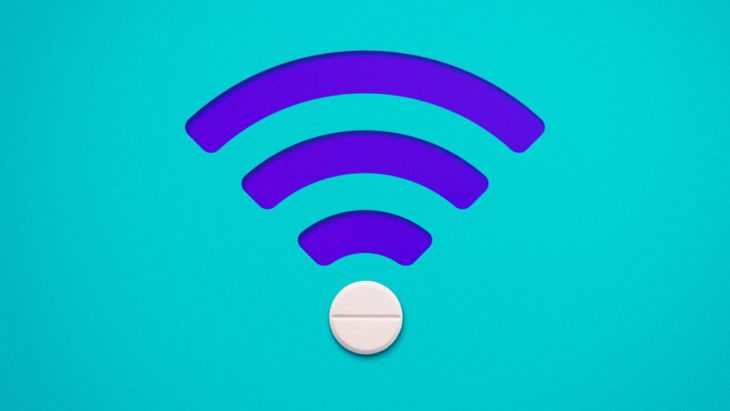I was a freshman in college when I found myself Googling “can Vitamin C induce your period?” There had been some condom-less sex and, surprise surprise, worries over a late period. I wasn’t about to head to my university’s health care office, which offered a Band-Aid and some Tylenol for pretty much every malady. I may not have known what could have helped me out, but I knew that neither a Band-Aid nor headache reducer was the answer. And so, I turned to Dr. Google and was immediately overwhelmed by all the results that showed up.
I had no idea which links were legitimate and which could have landed me in serious trouble. In the end, I did take a huge dose of Vitamin C and my period arrived shortly after. Whether it was due to coincidence (probably) or not, I’ll never know. Now I’m older, a bit wiser, and have an IUD firmly placed in my uterus to prevent any unplanned pregnancies. Yet, with the Supreme Court’s recent ruling in favor of Hobby Lobby, I can’t help but wonder if more people may now find themselves in the same situation as I did almost 15 years ago.
Allowing companies to refuse covering certain forms of birth control is only the tip of the iceberg. Abortion access has been under attack forever: the past few years have seen many clinics are closing, allowing for gaps in service for many folks across the country. It is getting increasingly difficult to access affordable contraception and abortion. Unless things change — and soon—- we’ll be living in an era where access to reproductive healthcare is limited for a lot of women, who may turn to Dr. Google more often than ever before. (In fact, they already are.) So, it was with great intrigue that I came across A Womb Of One’s Own, a free PDF download that gives information on DIY abortion, birth control, and other aspects of women’s reproductive healthcare. I was able to talk to Jane Doe, a pseudonym of the creator of the site, to learn more about her project.
Contents
The Frisky: Why did you create A Womb of One’s Own?
Jane Doe: “Choice” is a fiction for most women in the United States today, and the law hasn’t kept pace with changing technology and research. I’ve been learning about these things for a long time, for myself, for my friends, and for the women who send me desperate emails after they find a surgical abortion manual I wrote years ago as a protest against a new South Dakotan law banning all abortions.
Medical abortion with misoprostol and mifepristone is the safest abortion in the history of the human race, and it costs hundreds of dollars to walk into a clinic where you’re screamed at, have a doctor explain the pills he’s about to give you, and hand you pills that cost $10 in any other context. Abortion’s almost impossible to obtain in many places in the U.S., especially in rural areas and the Great Plains.
This is not choice. Hobby Lobby showed yet again that the Supreme Court has no interest in letting women’s reproductive health be treated like just another element of our health care. Our reproductive healthcare is determined in this country by politics, not by evidence or a body of research. When that happens, there’s only one solution: we need to take the knowledge back.

Source: indiatimes
Who do you suspect will benefit from your resources?
The information on birth control is good for everyone, but when it comes to the abortion side of the equation, I kept thinking about Oprah. Not Oprah the billionaire. Oprah, forty-five years ago — and every woman going through today what she went through then. She was raped and sexually abused, and got pregnant at age 14. She drank laundry detergent because she was trying to get rid of her pregnancy. Her baby died after he was born, and she says she saw it as a second chance for her to have a life that wasn’t defined by that childhood abuse.
There are a lot of women who need a second chance right now, and this book lets you make your choice in an informed way and do what you need to do to take your second chance back. I’ve heard about 60-year-old women giving this guide to their teen daughters. I’ve seen women tucking it away in their bookmarks folder in case something goes wrong with their birth control. This is for anyone who is pregnant or may become pregnant — or for anyone who cares about a person who is or may become pregnant. Which basically means all of us.
How did you go about sourcing your information for it?
One of my most invaluable resources has been Women on Waves/Women on Web, which has done incredible work in helping women obtain abortions in other countries.
I’ve also used quite a few articles from the medical journal Contraception, especially in the birth control part of the book (as well as the “increasing fertility” section, which will be part of the revised and expanded print edition coming out in August). Google Scholar has been a friend to me, and so have several medical students and nurses.
I want to be clear on this: all the information I’ve put together in this guide is available online. It’s just scattered everywhere. I haven’t developed any new methods, and I’m not recommending anything that hasn’t already been carefully studied. I wanted to make the information easy to understand for someone with no medical background. But if you have doubts about any part of Womb of One’s Own, the answer’s easy: look it up. Web searching is a powerful thing!

Source: theverge
In your opinion, are we headed toward a future that will require more resources like a Womb of One’s Own?
Absolutely. And in all honesty, while the reason for it is bad, I don’t think the decentralization of control is. Here’s the thing: you’re more likely to die from taking Tylenol than you are from using misoprostol to perform a medical abortion. And Tylenol’s on every drugstore shelf.
Technology has made abortion incredibly safe. It’s time to put safe abortion back into the hands of individual women, make them aware of the risks of misoprostol and when they should go to a hospital, and trust women. Until these drugs are available over the counter and taught about in every sex ed class, we’re giving women less freedom over their own bodies than, say, women in ancient times — who certainly shared abortifacient remedies with one another, abortifacient remedies far deadlier and more painful than the incredibly effective drugs available today.
It’s impossible to stop women from obtaining these cheap, effective pills. If they schedule misoprostol or mifepristone, making them illegal to import, they may actually become even easier to obtain online — just on the dark net markets instead of from online pharmacies.
This is a quiet revolution. Only in the most recent century have (mostly male) doctors been in charge of women’s contraception and abortifacient remedies. This information belongs with women. It always has.
Avital Norman Nathman blogs at The Mamfesto. Her book, The Good Mother Myth: Redefining Motherhood To Fit Reality, is out now. Follow her on Twitter.
Original by:
